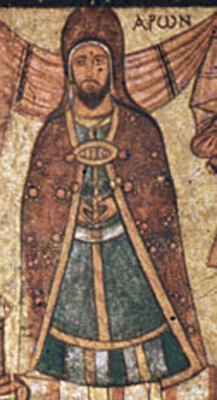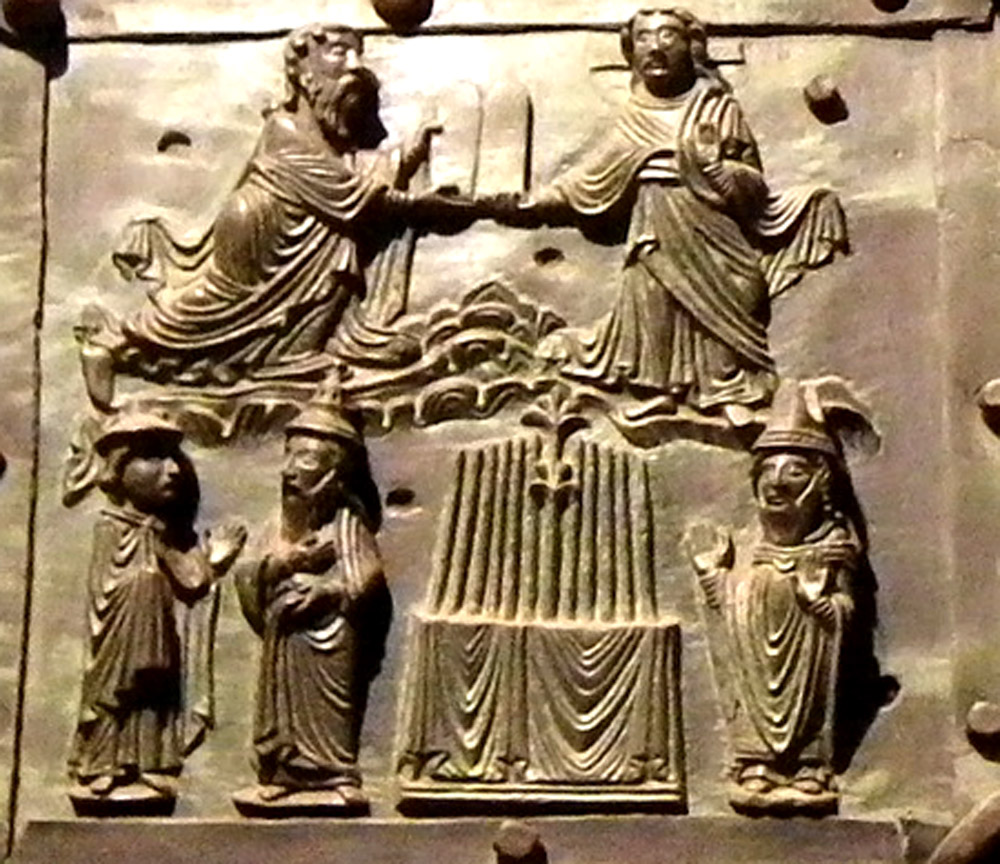The lower register illustrates Numbers 17:1-10. God has ordered Moses to put twelve staffs in the tabernacle, one from each of the tribes. Each staff is marked with the name of that tribe's leader, Aaron being the leader of the tribe of Levi. In the morning Aaron's staff has come into blossom. In Origen's interpretation Aaron, as the leader of all the tribes, is a type of Christ, "whose staff not only sprouts but blossoms and brings the fruit of believers." For other exegetes the dry staff yielding fruit without being watered prefigures the Virgin Mary, in whom Christ was conceived without the need for human seed (link).
As is common in the medieval West, Aaron's garments are vaguely sacerdotal but not based on the specifications in Exodus 28:1-38, except for the headpiece. The latter is shaped like the one in the Dura-Europos synagogue's image of Aaron, which was based on the garb of Persian priests:

